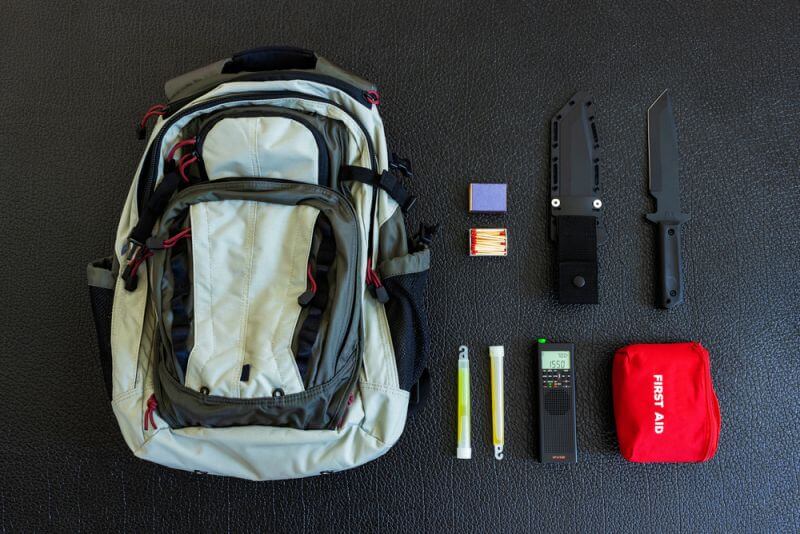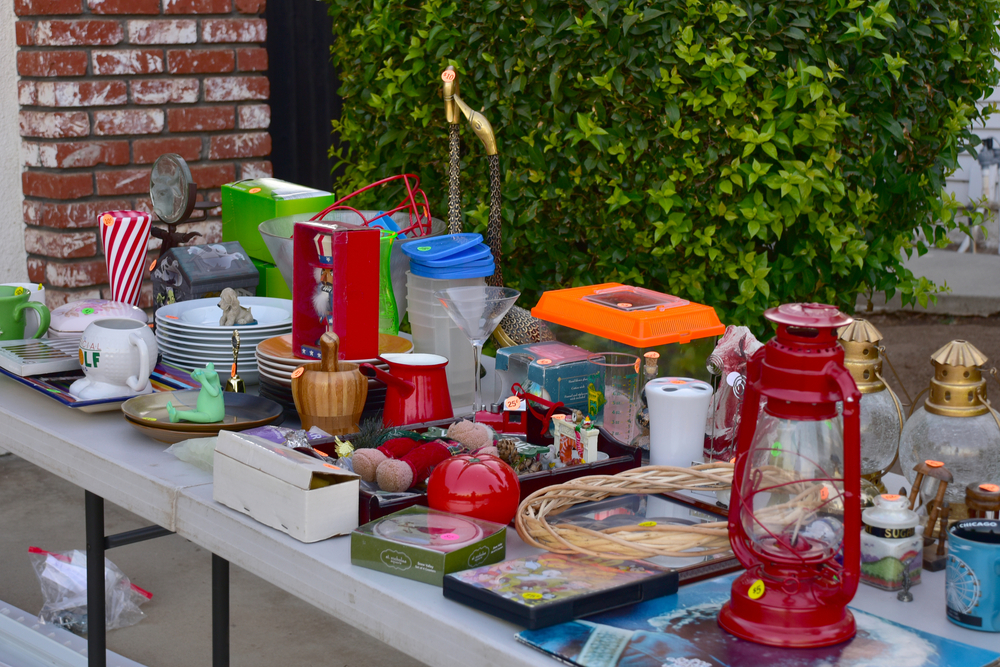As preppers, we spend a lot of our time planning, packing, and improving our resources to make sure everything is right where it should be when we need it the most. The same can be said about the bug-out bag, the most important piece of gear when it comes to evacuating your home.
We check the expiration dates of the items stored in it, change the clothes, and update the gear to fit the season, and so on. However, there is more to improving the bug-out bag than just checking and replacing items. Today, I’ll share some of my best practices that I’ve refined over the years.
Do the following to improve any bug out bag:
Waterproof the bag
One of the first steps to enhance your bug-out bag should be waterproofing it, or at least adding a cover or rainproof sleeve that fits over your backpack. This will help shield it from rain and keep moisture out.
You can apply a waterproofing spray to the bag, but make sure it is suitable for the material the bag is made of. This treatment helps repel water and keeps the interior dry, no matter the intensity of the downpour. Please keep in mind that you will need to regularly reapply the spray as needed to maintain its effectiveness.
An additional step to keep things dry is to place crucial items inside waterproof dry bags or sealable pouches before putting them into your bug-out bag. This ensures that even if the outer bag gets wet, your essential gear remains protected. Additionally, use seam sealant to cover the stitching and seams of your backpack. Consider using waterproof zippers or covers for the zippers to further safeguard against moisture.
Finally, routinely inspect your bag and waterproofing measures for any signs of wear or damage, and address any issues promptly to ensure that your gear stays dry and functional in any situation.
Check the Belts, Straps, and Frame of your bag and improve them
To ensure your bug-out bag remains reliable and functional, you also need to thoroughly inspect the belts, straps, and frame for any signs of wear or damage. Do this after each use (especially if you test it often to get used to its weight and feel).
Examine the belts and straps for tears, broken buckles, or loose stitching. Replace any damaged components with high-quality, durable alternatives to ensure they hold up under stress. If you identify any areas showing signs of wear, you need to reinforce them with additional stitching or repair patches to prevent further deterioration.
When checking the frame, look for bends, cracks, or any structural weaknesses that could affect its support. The frame is usually hard to fix; depending on the material it is made of, you might be able to straighten it at most. My advice is to replace the frame if necessary to maintain its strength and stability.
Also, make sure you adjust the straps to ensure they fit properly and distribute weight evenly across your body. As an avid hiker and camper, I can tell you from personal experience that proper adjustment helps prevent discomfort and strain during extended use. For some bags, you should consider upgrading to heavy-duty straps or adding extra padding for increased comfort and durability.
Be sure to regularly clean and maintain these components to prevent buildup that could lead to damage.
Make a list of what is needed the most
One of my favorite ways to optimize my bug-out bag is to make lists of the items that are a must for me. I recommend you start by making a comprehensive list of the items you need most in a survival situation.
This should be done after assessing your specific needs based on various factors such as climate, environment, potential threats you might face, and the level of your skillsets.
Beginners usually prioritize essentials like water and food supplies, which often take up a lot of space and add significant weight to the bag. Also, don’t go overboard with first aid kits, shelter materials, or fire-starting tools.
Once you’ve identified your core needs, categorize items by their importance and utility, keeping in mind the skillsets you have. Focus on packing high-priority items first and concentrate on those items that will make your life easier.
For example, I regularly review and update my list to reflect any changes in your circumstances or new items that may enhance your preparedness. There’s always new stuff popping up on the market with better characteristics and higher quality. Over time, you will replace many of your old items with newer, “more advanced” counterparts.
Silence your bug out bag
To enhance the effectiveness of your bug-out bag if you need to keep a low profile, it’s crucial to make it as silent as possible. Start by examining the components of your bag, such as zippers, buckles, and straps, that usually make noise while in use. Replace noisy metal buckles with quieter plastic alternatives, or use tape to dampen any rattling sounds. Secure loose items inside the bag to prevent them from shifting and making noise during movement. You can wrap metal items in clothing so that they make less noise.
You should also consider adding padding or cloth covers to hard objects inside the bag to further minimize sound if staying under the radar is your main priority. If you have noisy zippers, you can use a lubricant or wax to reduce their noise when opening or closing.
Additionally, check for any external parts of the bag that might create noise and address them with similar solutions. By silencing your bug-out bag, you reduce the risk of drawing unwanted attention in a survival situation, allowing you to move more stealthily and effectively.
Cut its weight
This is an operation you need to perform constantly if you want to optimize your bug-out bag. Cutting its weight is essential for improving mobility and ease of use, especially if your bug-out plan requires covering long distances on foot.
As stated before, start by evaluating each item in your bag and assessing its necessity. Remove any non-essential gear or redundant items. Replace heavy items with lighter alternatives, such as switching to compact, multi-purpose tools and lightweight, high-efficiency gear.
Also, consider using lighter materials for your shelter, clothing, and food supplies. One way I’ve cut some weight is by opting for dehydrated or freeze-dried meals, which are lighter and take up less space.
And just as mentioned before, regularly review and update your gear to incorporate advancements in lightweight materials and technologies. This should be done if you have the money to invest in new gear; otherwise, stick with what you’ve got and cut the weight elsewhere.
If you learn to systematically cut weight from your bug-out bag, you enhance your ability to move quickly and comfortably. A lighter bug-out bag makes your emergency preparedness more effective and manageable.
Improve external storage
This is another tip that few people are aware of, and almost all the prepper folks I’ve met fail to see the possibilities in enhancing their bag by using external storage capabilities for better organization and accessibility.
Start by checking the current external compartments and attachment points on your bag. You will soon identify any areas where additional storage could be beneficial or where current storage is insufficient.
Add external pouches or MOLLE (Modular Lightweight Load-carrying Equipment) attachments to increase storage space for frequently used items such as tools or water bottles. Any external pouch should be secured properly, and they should not disrupt your bag’s balance or comfort. If you carry large items, you will need to use compression straps or bungee cords to secure and prevent them from shifting during movement.
Consider adding custom-fit pockets or organizers for small items to keep them easily accessible, within reach, and to prevent them from getting lost.
Add multi-use items
This topic is one of the areas I keep hammering every time I discuss emergency preparedness, regardless of what people are preparing for or the needs they have. If you want to enhance the functionality of your bug out bag, you should focus on adding multi-use items that maximize utility while minimizing space.
First, check your essential gear that serves multiple purposes. For example, I carry a knife on me, but I also have a multi-tool that combines pliers, knives, screwdrivers, and other functions. I have a spare knife (even if it’s inferior to my main knife) and I also reduce the need for separate tools. There are now compact, versatile flashlights that include features such as a strobe function or a built-in compass, and even recharging options for various gadgets.
You could also incorporate items such as a small, portable cooking stove that can be used for boiling water and preparing meals, as well as for charging devices or tools. How about throwing in one or two space blankets? These serve as both a shelter and an emergency warmth source.
Consider multi-purpose clothing, such as pants that can be turned into shorts or jackets with removable sleeves to adapt to varying conditions.
Concluding
The bug out bag should evolve just as its owner does, and it needs constant check-ups and improvements. It’s not just a “set it and forget it” survival tool. The tips listed in this article have helped me adjust my bag and provide me with the peace of mind, knowing I have everything I need in one bag and that it won’t break my back when I’m forced to evacuate.









































































If you don’t have a FoodSaver vacuum-sealing machine, you might want to get one. Much of what you put in your bugout bag can be waterproofed by sealing it in a FoodSaver bag. The bags are rugged, and in the case of clothing, vacuum-sealing can also SUBSTANTIALLY reduce the size of the clothing’s footprint in the bag.
“One way I’ve cut some weight is by opting for dehydrated or freeze-dried meals, which are lighter and take up less space.”
A red flag here; dehydrated and freeze-dried foods are lighter because the water’s been removed. That water needs to be put back either by you during preparation or by your body after it’s eaten. I’m not saying that these foods are a bad idea, but be aware that you’re going to need to carry more water, which negates any weight savings. A possible here might be “Coast Guard” survival bars. They provide a BUNCH of calories along with vitamins and minerals in a small, vacuum-sealed form factor. The reason they’re “Coast Guard” is that they don’t dehydrate you when you eat them, and are approved for lifeboat survival provisions.
To me a Bug-Out-Bag is for bugging out from your home for an expected 72 and then returning home when conditions allow. You are dealing with a temporary problem. Or it could allow you to get to a bugout location.
My suggestion is to practice bugging out. Can you live/survive with what you have in your “Bug-Out-Bag?
I practice this often. Yes, I can survive with whats in my BOB. My BOB is a 96 hour bag. I also have an INCH bag. I have lived out of that bag for 12 days and I still could have been ok for another 4 or 5 days. A prepper should practice with both. IMO
Dry – I have a large collection of dry bags to use internally and selectively for items I want to stay dry. Contained inside the pack, the dry bags are protected from wear and tear and thorns while things are conveniently grouped to find easily and access items as a group that are often used together.
Great article that makes good points. Just some additional thoughts…
Zipper-style food storage bags, particularly the heavier freezer bags, are very affordable alternatives for dry bags. The small snack bags that now come in various sizes and formats, are especially handy for small items that you want to stay dry or that might get lost individually. They are good for keeping small portions of snacks like hard candies, jerky, crackers and gum. They are equally handy for adhesive bandages, adhesive tape, gauze pads and OTC meds that are individually wrapped or simply transferred from a large bottle and properly labelled. And don’t forget using them to keep cash and identification paperwork dry. If you are going to carry silver or gold coins, wrap those individually in facial tissue to keep them quiet, then put them in a pill bottle or snack bag and bury them at the bottom of your pack. Pill bottles are also an excellent way to keep wooden matches dry. You can even include a strip of the abrasive from a match box for strike-on-box matches since strike-anywhere matches are not available in all states. Or you can sometimes find storm-proof matches in the camping section at Walmart.
Food Saver now makes a handy, rechargeable vacuum sealer that works with their zipper bags which are resealable and can be vacuum sealed multiple times. If the valve on a bag goes bad, covering it with a piece of tape after vacuuming it will solve the issue.
I especially like using storage bags as a way to keep items in my Get Home Bag clean, dry and organized. I can put several metal or plastic eating utensils in a bag, they don’t get dirty, they don’t rattle or sink to the bottom of the GH Bag and, if I can’t wash them properly, after use, they don’t get other things dirty. I can put personal hygiene items in a single bag and even include an additional bag for a damp washcloth after using it. It is also a good idea to put any liquids I might have in my GH Bag into plastic bags so they don’t leak and get other contents wet or sticky, just as I do in my suitcase when travelling. By the way, saving the hygiene amenities (soap bar, shampoo, hand lotion, even coffee, tea and accessory packs) from hotel rooms is a great way to supply your BOB or GHB. Include a snack bag to keep a partially used bar of soap.
At this stage of my life (over 70, female and usually travelling alone with my dog), I am more concerned with getting back home than with bugging out. If I need to bug out, it is much more likely to be done in a vehicle rather than on foot. And my GHB is about at my personal weight limit. My BOB is still full but, having been assembled 5 years ago, chances are it will get used by someone else in the family, someone younger and stronger.